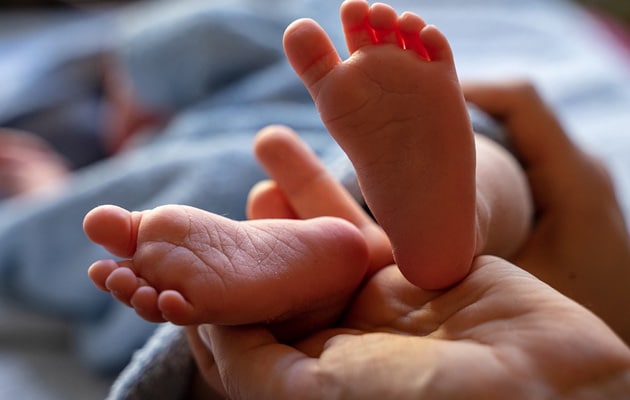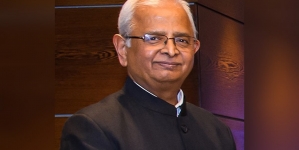-
LONDON: Run For Modi” Event In London To Drum Up Support For PM Modi - 12 hours ago
-
LONDON: Indian-Origin Candidate On How He Plans To Win London Mayoral Polls - 2 days ago
-
HARVARD: No Country Is Perfect”: Physics Wallah Urges Indian Students At Harvard, Stanford To Return - April 27, 2024
-
CALIFORNIA: PM Modi Put India On World Map As Credible Innovator- IT Industry Leaders - April 26, 2024
-
WASHINGTON: Indian Students Bag NASA Awards For Human Exploration Rover Challenge - April 25, 2024
-
LONDON: Indian-Origin Teen In UK Gets “Life-Changing” Cancer Treatment - April 25, 2024
-
SILICON VALLEY: All About Pavan Davuluri, New Head Of Microsoft Windows - April 25, 2024
-
LONDON: UK’s India Gate To Commemorate Role Of Indian Soldiers From World Wars - April 24, 2024
-
HARARE: Shri Bramha Kumar appointed as the next Ambassador of India to the Republic of Zimbabwe - April 23, 2024
-
LONDON: Indian-Origin Principal Wins UK Legal Challenge Over School Prayer Ban - April 23, 2024
LONDON: As UK Births Hit 20-Year Low, Indian-Born Parents Take Record Share
LONDON: The number of babies born in England and Wales fell to its lowest level in two decades last year, while a record proportion came from parents who were both born abroad, highlighting a long-term shift in the nation’s demographic makeup.
Of all live births, 23.1% were to non-UK-born parents – a proportion that has shot up from 16.7% in 2008, and is up from 21.5% a year ago, according to census data released Thursday by the Office for National Statistics.
The figures also showed the share of babies born to British parents has slipped, from 62% to 60.3%, and the overall number of births sank to 605,479. That’s the lowest since 2002, and points toward slower population growth that could be a drag on both the economy and labor market in the decades ahead.
The “increase in the number of non-UK born mothers is a good thing” given the UK’s own falling birth rate, said Jonathan Portes, professor of economics and public policy at King’s College London. But declining numbers of overall births is the “real story here,” he said, adding that it’s a “serious long-term social problem for us.”
The rising number of births to foreign parents could help ease fears that the UK will face a labor supply crunch as its population ages and retirees out-pace the rate at which new workers come into jobs. But polling suggests migration is still an important concern for British voters.
More than half of the public favor a cut in immigration, according to a recent survey by Kantar and the Migration Observatory. That suggests rising numbers of births to migrant families could be a thorny issue for both major political parties as they face the prospect of a general election next year.
Nuni Jorgensen, a researcher at the Migration Observatory, pointed out that even while migrant parents were having more children than UK-born families, they still weren’t having enough to replace the number of older people dropping out of the workforce.
So-called “replacement-level fertility,” or the number of children each woman needs to have to replace the older generation, is currently 2.1, Jorgensen said. “We can see that for both UK born and non-UK born women, fertility rates are below replacement level.”
The number of children born to parents who were both from abroad hit 139,953 last year, up from 134,308 a year earlier and its highest level since 2017. Numbers have remained relatively flat for births involving one non-UK-born parent, while births to two UK-born parents have fallen to 365,111, the lowest level in comparable data going back to 2008.
The ONS data suggests fertility rates are falling. More women are choosing not to have children either for professional reasons or financial concerns, as the UK remains embroiled in a cost-of-living crisis.
A rise in the number of people immigrating to the UK in recent years is likely to have led to the jump in migrant parents in 2022. A record 606,000 more people moved to Britain than departed last year, boosted by humanitarian programs and demand for workers whose skills were in short supply.
India overtook Romania as the most common country of birth of foreign new mothers, after a third of all third of residence visas were granted to Indian nationals. Afghanistan also entered the top 10 for the first time, after the UK formally opened the Afghan Citizens Resettlement Scheme at the start of 2022.
India also replaced Pakistan as the most common country of birth for non-UK-born new fathers. Pakistan had held the top spot since comparable data began in 2008.
In London, more than two thirds of births were to parents where at least one was from outside the UK. The highest percentages were seen in Brent, Westminster, Newham and Harrow, at more than 80% of births.
Outside of London, the Berkshire town of Slough and the Bedfordshire town of Luton were the areas with the highest rate of births to at least one migrant parent, at 75% and 74.6% respectively.
Further away from the capital, Oxford and Leicester saw the highest percentages at 65.9% and 65% respectively.
























